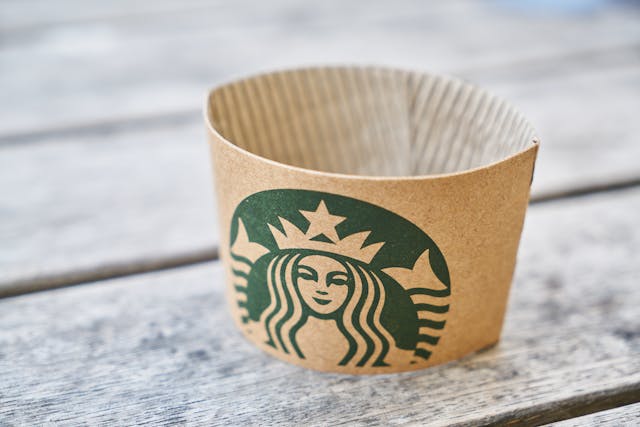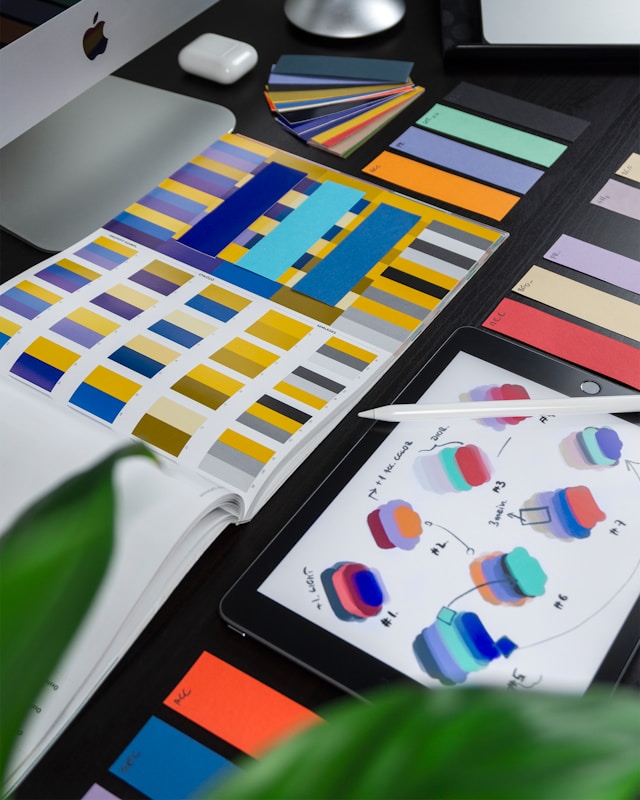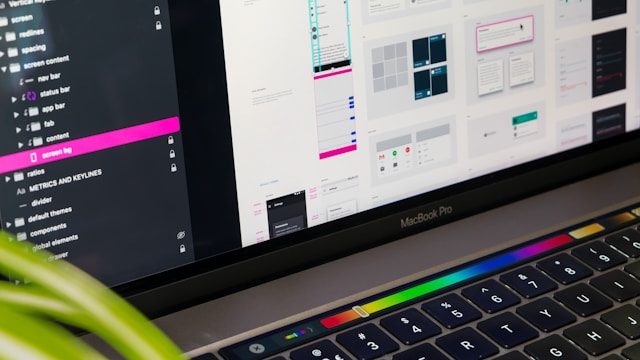Brand research is more than just the gathering of quantitative and qualitative insights surrounding a brand’s perception. It’s also more than just a means of analyzing a brand’s impact within its target market.
Brand research aims to identify brand perceptions within its target market and explain the reasoning behind such perceptions.
The result—a brand that can learn more about its strengths, potential areas of improvement, opportunities for enhancement, and threats.
Brand research can serve as a navigational aid through the ever-changing market dynamics, helping to create a first-rate marketing strategy. In other words, brand research is essential when establishing and expanding a customer base.
You may have guessed that today’s actionable guide encompasses the ins and outs of brand research. Not only will we address the different types of brand research, but we will also reveal how to conduct it!
What Is Brand Research?
Brand research refers to the act of investigating the several facets of both new and existing brands. The goal of brand research is to maintain and enhance a brand’s value.
As previously mentioned, a brand consists of several different facets. When conducting brand research, you can analyze the following:
- Brand Awareness
Brand awareness measures how recognizable your brand is. You can conduct brand awareness research in an aided and unaided manner.
- Brand Associations
Brand associations are a means of asking respondents what else comes to mind when thinking about that particular brand. In other words, brand associations are a way of deciphering a brand’s reputation.
You can identify whether a particular brand is synonymous with good customer service or solid ethical practices. Whatever brand associations you find, both positive and negative associations will help you determine how customers perceive a brand.
- Brand Perception
It’s natural to think that brand associations and brand perception are the same thing; however, there is a slight distinction. While brand association focuses on the negative and positive aspects of a brand, brand perception focuses on the whole picture.
Whenever a customer interacts with a brand, both actively and passively, they will make judgments from that experience. These judgments will culminate to create a customer’s overarching perception of that brand.
- Brand Loyalty
Brand-loyal customers are customers who will choose your products over your competitors, regardless of pricing differences.
Brand loyalty measures how likely a customer is to revisit a brand and recommend said brand to their friends.
- Brand Equity
Brand equity measures a brand’s value—both its perceived and actual value—that it has over similar brands.
- Brand Preference
Brand preference is a metric that indicates how many people would prefer to choose a brand’s products over its competitors.

What Is Brand Design?
It takes more than aesthetic value to enhance a brand’s performance in the modern digital landscape. That being said, you shouldn’t underestimate the importance of your brand’s visual identity.
This is where brand design enters the picture. So, what is brand design?
Brand design refers to the process of creating and implementing visual elements that culminate into a brand’s visual identity. In other words, the brand design establishes a brand’s signature look and feel.
Brand design focuses on the fluid marriage of visual elements such as a brand’s logos, color schemes, typography, and images.
The goal of brand design is simple but crucial – to make a brand’s identity recognizable to its target audience.
What Is Brand Design Research?
In order to craft a brand identity that resonates with both prospective and loyal customers, you must conduct brand design research.
Your brand designs should stem from the actionable insights of market research. In conducting market research, you will understand your brand’s target markets and have a clearer picture of market trends.
Furthermore, in conducting market research, you will clarify the brand’s market presence and competitive advantages regarding brand design elements. By seeing how your competitors unify their design elements, you can see how they differ from yours. From here, you can make improvements accordingly.
You must also conduct customer research. Like UX design, you must understand the unique needs and desires of your customers. In doing so, you will create a brand identity that customers recognize and positively perceive.
Lastly, you must conduct internal research to clarify the perspectives of the brand’s employees. Employees serve as the face of a company’s brand, and for this reason, internal research is imperative. By determining how a brand’s employees interact with their customers and colleagues, you can learn more about a brand’s values.

What Is Brand Awareness?
Before looking at brand awareness research, it’s essential to know what brand awareness is.
Simply put, brand awareness occurs when customers can recognize a brand. Going beyond this, brand awareness encompasses what customers find synonymous with a brand. In other words, brand awareness also encompasses a brand’s reputation.
Without awareness, customers won’t know of a brand and won’t even consider it a viable option. However, with negative awareness or general confusion surrounding a brand’s identity and offerings, customers will actively avoid said brand.
Knowing what brand awareness is one thing, but it’s not enough to evaluate how customers perceive your brand. In order to get a clear understanding of your brand’s recognizability, you must conduct brand awareness research.

What Is Brand Awareness Research?
You can typically conduct brand awareness research via online surveys.
The goal of said surveys and brand awareness research overall is to effectively track a brand’s performance. Before you start conducting brand awareness surveys, however, there is something else you should know.
You must know the two types of brand awareness as they will affect how you conduct your surveys. To help you differentiate the two types of brand awareness, we’ve explored them below.
Aided Brand Awareness
Aided brand awareness refers to the respondent’s recognition of a brand name when prompted with a list of brand names. You can also use a list of brand logos if you so choose.
The goal of aided brand awareness is to determine how many people recognize a brand based on visuals or questions.
Unaided Brand Awareness
Expectedly, unaided brand awareness is typically a much more difficult task for the respondent in comparison to aided brand awareness.
However, by conducting an unaided brand awareness survey, you can assess how ‘top of mind’ a brand is. Simply put, ‘top of mind’ is when a brand is the first brand that pops into the respondent’s mind unprompted.
Unaided brand awareness surveys indicate how well a brand is performing in the digital market. Going even further, you should compare ‘top of mind’ scores between a brand and its competitors. As a result, you’ll have an even better understanding of how effective a brand’s performance is.
Once you’ve conducted both types of surveys, you can deduce a total brand awareness figure. To do so, all you need to do is aid the unaided and aided awareness percentages together.
What Is Brand Loyalty?
Brand loyalty occurs when customers continue to use/purchase from a particular brand. Even when said brand’s competitors offer similar products or services, customers will still choose to work with that particular brand.
Brand loyalty is not dependent on the product’s or service’s price. Instead, brand loyalty relies on the customer’s perception that a brand’s high-quality service is unmatched.
Ultimately, brand-loyal customers believe that their go-to brand offers products, services, and experiences that its competitors cannot. For this reason, brand loyalty is perception-based as opposed to money-based.

What Is Brand Loyalty Research?
You can typically conduct brand loyalty research via surveys and questionnaires.
The questions within those surveys/questionnaires must exhibit questions that can elicit specific responses. Specifically, the questions you ask must enquire into the various aspects of a customer’s relationship and commitment to a brand.
Brand loyalty research primarily focuses on customer satisfaction. You must determine if a customer is satisfied with their experience with a brand and why.
By knowing why a customer is loyal to a brand, you’ll ensure that they’ll always demonstrate loyalty toward said brand.
How To Conduct Brand Research
Knowing the subsectors of brand research is essential when gaining valuable insights that will later enhance a brand’s performance. However, you can’t start enhancing a brand’s performance without knowing how to conduct brand research.
Below, we’ve provided a step-by-step guide to help you conduct effective brand research!
Step One: Clarifying Your Objectives
Before you start conducting any brand research, you must clearly understand and communicate your goals.
Ask yourself:
- What aspect of brand research do I need to research?
- Do I have a deep understanding of the brand’s target audience?
- What research methods will I need to uncover relevant data?
- How will your research help the brand expand?
Step Two: Developing a Brand Research Strategy
Once you’ve clearly defined your research objectives, you can start to develop a brand research strategy.
A brand research strategy is a well-developed plan that isn’t too dissimilar to a UX researcher’s plan. Like a UX researcher’s plan, a brand research strategy clarifies how a brand will gather, analyze, and interpret valuable data.
The critical difference between UX research and brand research strategies is the type of data you’ll collect. Typically, relevant data appears in the form of insights relating to a brand’s target market, positioning, and health. Whatever data you wish to reveal—or, put simply, your research objectives—should appear in a brand research strategy.
Creating an effective brand research strategy also means that you understand the brand’s objectives and values. From here, you should define essential research questions and identify appropriate research methods.

Step Three: Choosing Your Research Methods
Speaking of research methods, during this step of your research, you must determine the right ones to utilize.
Revisit your research objectives and choose a method that has the highest chance of producing the desired results. From surveys to social media analysis, you must decide which method will help you achieve your research goals.
Tip: By conducting surveys, you can acquire both quantitative and qualitative insights. Of course, this is dependent on how you frame your questions, but we’ll touch on this shortly.
Step Four: Conducting Your Research Methods
If you’ve chosen to conduct surveys as recommended, you must ensure your surveys exhibit an understandable structure. Without a well-structured, easy-to-follow survey, you can’t elicit the correct responses from your participants.
Here are some additional factors to consider when conducting your chosen research method:
- The phrasing of the questions.
- The session’s duration.
- The sample size.
- The chosen distribution channels.
- The recruited participants.
Step Five: Analyzing Your Data
Once you’ve finished your research sessions, it’s time to analyze your findings.
Keep an eye out for patterns, trends, anomalies, and insights that will reveal areas of improvement for the brand.
Step Six: Acting on Your Insights
Now that you’ve finished conducting your brand research, the last step is to act on your data.
Utilize the data to make the necessary refinements to your messaging, product, or even marketing channels.
Remember: every insight you act on must inform actionable decisions that enhance the brand overall.
Branding Research Questions You Should Utilize
It’s crucial that you know what kind of questions to ask when conducting your brand research surveys. The phrasing of your branding research questions can make the difference between relevant data and unusable data.
To help you formulate the right questions, consider a few of the examples we’ve provided below:
- How did you discover our brand?
- When you think of our brand, what comes to mind?
- If you had to describe our brand in three words, what words would you use?
- How would you describe our products/services to your friends?
- Which other [SUBJECT] brands are you aware of?
- Which of these [BRANDS] do you most prefer?
- How would you describe your last experience with our brand?
Brand Research: Appealing to Your Target Market
Hopefully, what you’ve taken away from this guide is that brand research is an essential facet of a brand’s success.
In the ever-evolving dynamic of the digital market, you must ensure you have conveyed your brand’s identity effectively. An effective brand identity adheres to the brand’s core values and also resonates with its target market.
If you need some inspiration, look no further than Page Flows.
With over 4,200 recordings of tried and tested products, our designs reflect our dedication to our users.
With Page Flows, you’ll learn what it looks like when a company has effectively utilized brand research. Over 1,000 happy customers from esteemed brands can vouch for us!
When it comes to brand research, we know what it takes to turn prospective clients into brand-loyal customers. With Page Flows as your guide, you will too!
Get started today to access our growing library of user flow recordings and finally stay up-to-date with current design trends.





